






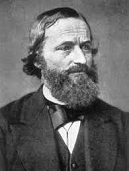










TLW's Electronics Historyscope |
By T.L. Winslow (TLW), the Historyscoper™ |
© Copyright by T.L. Winslow. All Rights Reserved. |
Original Pub. Date: Oct. 5, 2015. Last Update: July 24, 2020. |



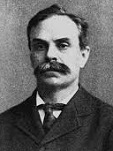


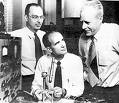


Westerners are not only known as history ignoramuses, but double dumbass history ignoramuses when it comes to electronics and electronics history. Since I'm the one-and-only Historyscoper (tm), let me quickly bring you up to speed before you dive into my Master Historyscope.


In 1600 English royal physician William Gilbert (1544-1603) pub. De Magnete, Magneticisque Corporibus, et de Magno Magnete, Tellure, Physiologica Nova, the first great English scientific work, containing his discovery that the Earth itself (not just some island in the N) is a giant magnet, and coining the terms "electricity" (Lat. "electricus" = like amber in its attractive properties), "electric force", "electric attraction", and "magnetic pole".
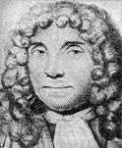
In 1620 Niccolo Cabeo (1586-1650) of Italy discovers that electrified bodies can attract non-electrified ones and that two electrified bodies repel each other.
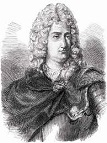
In 1733 French chemist Charles Francois de Cisternay du Fay (1698-1739) pub. his discovery that electrical action can be repulsion as well as attraction, calling the two types "vitreous" and "resinous", noting the difference between conductors ("electrics") and insulators ("non-electrics"); he also disproves the theory of Stephen Gray that electric properties of a body depend on its color.

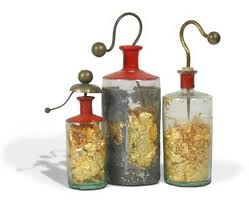
In 1745-6 the Leyden Jar, the biggest electrical breakthrough of the 18th cent. is discovered independently by Canon Ewald Georg von Kleist (1700-48) of Kamin, Pomerania (Oct. 11, 1745) and Pieter van Musschenbroek (1692-1761) of the U. of Leyden in Holland (Jan. 1746), giving it its name.

The original unrated unwrapped American DVD? In 1746 Boston, Mass.-born brain man Benjamin Franklin (1706-90) spends the summer experimenting with electricity. In Apr. 1749 he surmises that lightning is a form of electricity, and warns that it is dangerous to take shelter under a tree during a "thunder gust"; in the summer he kills turkeys with the electricity from a big battery, commenting that "The birds killed in this manner eat uncommonly tender"; in 1749 he pub. Opinions and Conjectures concerning the Properties and Effects of the Electrical Matter, arising from Experiments and Observations, Made at Philadelphia, in which he comments: "The electrical matter consists of particles extremely subtile, since it can permeate common matter, even the densest metals, with such ease and freedom as not to receive any perceptible resistance. If any one should doubt... a shock from an electrified large glass jar, taken through his own body, will probably convince him." In 1750 he writes Two Letters on Lightning that are presented to the Royal Society of London, describing an 1749 experiment (which he hasn't tried yet) to see if lightning is really electricity by holding a 20-30-ft. pointed sharp metal rod up from the top of a tower during a thunderstorm, inventing the Lightning Rod; they are excerpted in The Gentleman's Magazine, then pub. as an 86-page booklet next year, causing a (electric?) sensation. On May 10, 1752 after Louis VI requests that Benjamin Franklin's proposed lightning rod experiments be attempted, naturalists Comte de Buffon and Thomas Francois D'Alibard dragoon a retired soldier to hold a 40-ft. iron rod in a storm and draw sparks in the village of Marly on the N outskirts of Paris; the experiment is then repeated dozens of times across France, making Franklin a celeb; meanwhile, having waited for the steeple of Philly's Christ Church to be finished, 46-y.-o. Franklin performs his famous kite experiments with lightning from a shed in June, using a silk kite flown by his 22-y.-o. son William; news of his fame in France reaches him in July-Aug., and he doesn't report his own experiments until Oct.; the first lightning rods to be put in service are erected in Philadelphia in late June and early July. In 1769 the first lightning rods appear on bldgs. In 1766 Roman Catholic father ? Sterzinger defends Benjamin Franklin's lightning rod from the theory that thunder and lightning are caused by demons, with the soundbyte: "For his lightning-rod did what exorcisms, and holy water, and processions, and the Agnus Dei, and the ringing of church bells, and the rack, and the burning of witches, had failed to do. This was clearly seen, even by the poorest peasants in eastern France, when they observed that the grand spire of Strasburg Cathedral, which neither the sacredness of the place, nor the bells within it, nor the holy water and relics beneath it, could protect from frequent injuries by lightning was once and for all protected by Franklin's rod. Then came into the minds of multitudes the answer to the question which had so long exercised the leading theologians of Europe and America, namely, 'Why should the Almighty strike his own consecrated temples, or suffer Satan to strike them?'"

In 1748 French physicist Abbe Jean-Antoine Nollet (1700-70) invents the Electroscope, and describes how a cylinder filled with alcohol, closed with an animal bladder and immersed in water causes the bladder to swell to bursting as water passes in and alcohol can't pass out, becoming the first description of Osmotic Pressure (Gr. "osmos" = impulse).

In 1785 French physicist Charles-Augustin de Coulomb (1736-1806) discovers Coulomb's Law of electrical forces.

In 1786 Italian scientist Luigi Galvani (1737-98) discovers that nerves transmit electricity, and goes on in 1789 to experiment on the muscular contraction of dead frogs.


In 1799 Italian physicist-chemist Alessandro Giuseppe Antonio Anastasio Volta (1745-1827) makes the shocking discovery of the Voltaic Pile, reporting it to the British Royal Society next year; the first one is made of zinc and copper metal plates and wet cardboard soaked in salt solution, and he later substitutes silver for copper and cloth for cardboard to build bigger piles from which he can draw sparks and shocks, amazing the world and causing a sensation; in May W. Nicholson and A. Carlile use a voltaic pile to decompose water, observing oxygen appearing at one pile and hydrogen at the other, adding to the sensationalism with the idea that atoms are held together by electricity - and hence immortality is just around the corner? In 1818 London-born Mary Wollstonecraft Shelley (1797-1851) pub. the Gothic romance novel Frankenstein, about a mad scientist who makes a corpse live again via electricity; she got the idea while in a trance based on the writings of alchemists about creating a homunculus in a test tube, "a pale student of the unhallowed arts [grave-robbing] kneeling beside the thing he had put together"; "I beheld the wrath of the miserable monster whom I had created"; "I curse (although I curse myself) the hands that formed you" - could it have really been based on her hubby Percy's anatomy?


In 1819 Danish physicist Hans Christian Oersted (1777-1851) discovers electromagnetism, the relation between electricity and magnetism - no fairy tale? In 1820 he discovers that an electric current in a wire deflects a compass needle, the direction depending on the direction of current flow, thus discovering electromagnetism; French physicist Andre-Marie Ampere (André-Marie Ampère) (1775-1836) repeats his experiments and discovers that two current-carrying wires exert a reciprocal action upon each other, and pub. Ampere's Law. In 1824 Ampere invents the Galvanometer.
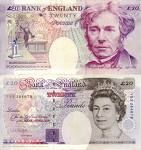
The original A Star is Born? In 1821 English physicist Michael Faraday (1791-1867) turns the "magnetic needle being deflected by an electric current" experiment on its head and discovers the electric motor principle (electromagnetic rotation) ("electrified wire being moved by a magnet"), which unlocks the entire field of electromagnetism in physics, launching the Great Rev. in Physics; his celeb boss Sir Humphry Davy gets jealous and tries to keep him from being elected to the Royal Academy, claiming that he stole the work of William Austin, but when Austin vindicates Faraday, the science is so undeniable he gets in anyway in 1824, and Davy kicks off within five years from self-abuse with laughing gas? In 1831 Faraday discovers Electromagnetic Induction. In 1832 he pub. a pictorial representation of electric and magnetic lines of force, introducing the Field Concept into physics, showing radial instead of straight field lines, rocking the scientific world.

In 1821 Estonian-born German physicist Thomas Johann Seebeck (1770-1831) discovers the Peltier-Seebeck Thermoelectric Effect, where a junction of dissimilar metals produces an electric current when exposed to a temperature gradient, with the voltage produced proportional to the junction temperature difference, and the proportionality constant becoming known as the Seebeck Coefficient. In 1822 he invents the Thermocouple.


No Pain No Gain for electrical circuits? In 1827 German physicist Georg Simon Ohm (1789-1854) pub. his famous Simple Simon Ohm's Law, stating that the ratio of electromagnetic force to current in an electrical circuit is a variable, er, constant, i.e. V = I * R (variable electromotive force = variable electric current times constant electrical resistance, independent of current and voltage).

In 1831 English physicist Joseph Henry (1797-1878) invents the electric bell; he uses silk from his wife's stockings to wrap wire for the poles of his horseshoe magnet, which is able to lift one-third ton. In 1832 he discovers self-induced currents (inductance), and in 1842 he discovers the oscillatory character of electrical discharges.

In 1845 German physicist Gustav Robert Kirchhoff (1824-87) proposes Kirchhoff's Circuit Laws, generalizing the work of Georg Simon Ohm and preparing the way for the work of James Clerk Maxwell.
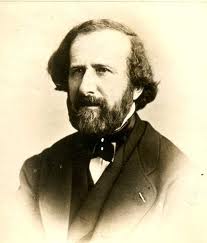
In 1853 French physicist Armand Hippolyte Louis Fizeau (1819-96) first describes the use of the capacitor (condenser) to increase the efficiency of an induction coil.


In 1860 Ludwig Boltzmann (1844-1906) of Austria and James Clerk Maxwell (1831-79) of Scotland begin the development of Statistical Mechanics, treating gas as a collection of huge numbers of billiard balls obeying Newton's Laws of Motion. In 1861 Maxwell pub. the paper On Physical Lines of Force in Philosophical Mag., first describing Maxwell's Equations, four partial differential equations which contain a combined theory unifying all partial theories of electricity and magnetism, showing that a magnetic field generates an electric field and vice-versa, forming a pulse which propagates at the speed of light, and that therefore light is an electromagnetic wave, and furthermore that light can only travel at the speed c, and furthermore that the speed of the source of the light doesn't affect it, becoming one of the greatest leaps of thought in history; they are first pub. as a distinct group in 1884 by Oliver Heaviside and Willard Gibbs - the potato salad of physics?

On Feb. 20, 1864 Washington, D.C. dentist Mahlon Loomis (1826-86) pub. the earliest description of an Electromagnetic (Radio) Transmission System (Wireless Telegraphy), containing the soundbyte: "A process by which telegraphic communications may be made across the ocean without any wires, and also point to point on the earth, dispensing with wires", demonstrating it in Oct. 1866 between two kites 14 mi. apart in Bear's Dean, Loudoun County; on July 20, 1872 he receives U.S. patent 129,971 ("Improvement in Telegraphing"), making him the inventor of radio? On July 20, 1872 he patents Wireless Telegraphy, U.S. patent 129,971 ("Improvement in Telegraphing"): "What I claim as my invention or discovery, and desire to secure by Letters Patent, is: The utilization of natural electricity from elevated points by connecting the opposite polarity of the celestial and terrestrial bodies of electricity at different points by suitable conductors, and, for telegraphic purposes, relying upon the disturbance produced in the two electro-opposite bodies (of the earth and atmosphere) by an interruption of the continuity of one of the conductors from the electrical body being indicated upon its opposite or corresponding terminus, and thus producing a circuit or communication between the two without an artificial battery or the further use of wires or cables to connect the co-operating stations"; too bad, he never builds any apparatus, and his claim is jumped by William Henry Ward, who receives a patent on Apr. 30; in Jan. 1872 the U.S. Congress hears Loomis' plea to charter the Loomis Aerial Telegraph Co. and turns him down.
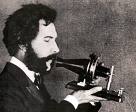
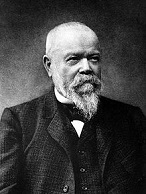
In 1873 Belgian engineer Zenobe Theophile (Zénobe Théophile) Gramme (1826-1901) and Hippolyte (Francois-Hypolite) Fontaine (1833-1910) invent the Gramme Machine, becoming the first commercially useful electric motor, utilizing a ring armature with multiple overlapped coils and multiple commutator contacts; after Fontaine accidentally discovers that the motor is reversible, the first Electric Alternator is created, transmitting electricity 2 km via copper wires.

In 1874 Irish physicist George Johnstone Stoney (1826-1911) of the Nat. U of Ireland coins the word "electron"; actually he named it "electrine", and changed it in 1891 - don't ask why a Gaelic wants to use Greek?

In 1878 English chemist-physicist Sir William Crookes (1832-1919) invents the Cathode Ray (Crookes) Tube (CRT), which requires a vacuum of one twenty-thousandth of atmospheric pressure (0.03 mm Hg), and shows that the rays travel in straight lines that can be deflected by a magnet, then uses the beam to heat metals, turn a small wheel, and excite fluorescence - Star Trek coming right up?

In 1879 Gorham, Maine-born physicist Edwin Herbert Hall (1855-1938) discovers the Hall Effect, the creation of a voltage difference across an electrical conductor transverse to the electric current, along with a magnetic field perpendicular to the current.
On Feb. 2, 1880 the first electric streetlight is installed in Wabash, Ind., which on Mar. 1 becomes the electrically-lit city on Earth; some New York streets are lit by electricity this year, and Broadway by 1882.
On Feb. 24, 1880 the SS Columbia is launched on the Delaware River in Chester, Penn.; on May 22 it is lit up for the first time at the foot of Wall St. in New York City, becoming the first outside usage of Edison's incandescent light bulb.
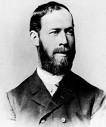
In Nov. 1887 German physicist Heinrich Rudolf Hertz (1857-94) pub. the paper "On Electromagnetic Effects Produced by Electrical Disturbances in Insulators, showing that James Clerk Maxwell's 1865 paper theorizing the existence of electromagnetic waves is correct, causing the unit of frequency cycles per sec. to be named in his honor; he observes that a spark jumps a gap more easily when the electrodes are illuminated by light from another spark gap, becoming the first observation of the photoelectric effect, which Einstein finally explains in 1905 by proposing that radiation is quantized, and when light quanta hit metal they overcome the attractive potential holding electrons in, and convert their remaining energy into kinetic energy of the ejected electrons.
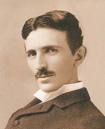
The first year people have the AC-DC option? In 1888 Croatian-born Nikola Tesla (1856-1943) of the U.S. invents the Alternating Current (AC) Electric Motor, which is manufactured by George Westinghouse; Thomas Edison, a DC man, facetiously bet him he couldn't do it, and then reneged on a $25 a week raise in 1885, causing a lifelong grudge? In 1891 Tesla first demonstrates alternating current for commercial use at the Ames Power Plant in Colo. between Silverton and Telluride; he goes on to build a weird funky lab in Colo. Springs in 1899 to develop wireless transmission of electrical power using Tesla Coils. Tesla dies on Jan. 6/7, 1943 in New York City; he was murdered by Otto Skorzeny and Reinhard Gehlen to steal his revolutionary military inventions incl. the gravity motor?; his property is seized by the U.S. govt. Office of Alien Property, then examined by Pres. Donald Trump's MIT prof. uncle John G. Trump, who concludes: "[Tesla's] thoughts and efforts during at least the past 15 years were primarily of a speculative, philosophical, and somewhat promotional character", but "did not include new, sound, workable principles or methods for realizing such results"; electrifying conspiracy rumors about suppressed inventions incl. anti-gravity flying machines fly around to modern times: "The scientists of today think deeply instead of clearly. One must be sane to think clearly, but one can think deeply and be quite insane"; "When wireless is fully applied, the Earth will be converted into a huge brain, capable of response in every one of its parts"; "To me, the Universe is simply a great machine which never came into being and never will end. The human being is no exception to the natural order. Man, like the Universe, is a machine"; "It is a mere question of time when men will succeed in attaching their machinery to the very wheelwork of nature."
On Apr. 15, 1892 the General Electric Co. is formed by the merger of the Edison Gen. Electric Co. of Schenectady, N.Y. and the Thomson-Houston Electric Co. of Lynn, Mass., backed by Drexel, Morgan & Co.

On June 1, 1894 Sir Oliver Joseph Lodge (1851-1940) of England demonstrates the use of a Coherer for detecting radio signals, becoming a big breakthrough for vacuum tube technology.

In 1894 Serbian-born Am. physicist Michael Idvorsky (Mihajlo Idvorski) Pupin (1858-1935) invents the Pupin Loading Coil, which greatly extends the range of long distance telephones by adding distributed inductance to the line; the patent is later acquired by AT&T.

In 1895 French physicist Jean Baptiste Perrin (1870-1942) proves that cathode rays are made of corpuscles with negative electric charge.

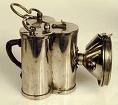

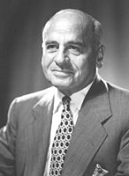

On Jan. 10, 1899 Russian New York City immigrant (1891) Conrad Hubert (Akiba Horowitz) (1856-1928) of the Am. Electrical Novelty and Manufacturing co. patents a clover-leaf bicycle flashlight (#617, 592), changing the name in 1905 to Am. Ever Ready Co.; in 1914 it merges with the Nat. Carbon Co., shortening the trademark to Eveready; in 1917 it merges wth Union Carbide to form the Union Carbide and Carbon Co., using the trademark "DAYLO" for flashlights and batteries until 1921; in 1958 it introduces the Eveready Alkaline Battery, which on Mar. 1, 1980 is renamed the Energizer, with the Energizer Bunny ad campaign helping it reach a 52% market share by 1986, when the battery products div. is acquired by Ralston Purina Co., becoming the Eveready Battery Co. Inc., which is spun-off in 2000 as Energizer Holdings Inc.; meanwhile Hubert's partner Joshua Lionel Cowen (1877-1965) (who invented the flashlight for illuminating a flower pot and sold it to him) patents a device for igniting a photographer's flash, patents a device for igniting a photographer's flash, and in 1900 founds Lionel Corp. to market toy trains (until 1993).

In 1899 Danish engineer Valdemar Poulsen (1869-1942) invents the first magnetic tape recorder, the steel-wire drum Telegraphone (U.S. patent #661,619).


On Dec. 24, 1906 (Xmas Eve) Canadian-born Reginald Aubrey Fessenden (1866-1932) (the Thomas Edison of Canada?) broadcasts the first radio program consisting of voice and music in Brant Rock, Mass. using a 75 Khz 500 watt Alexanderson High Frequency Alternator designed by Swedish-born engineer Ernst Frederick Werner Alexanderson (1878-1975); the transmission is heard as far away as the Caribbean Sea.

In 1906 Am. inventor Lee De Forest (1873-1961) invents the Audion Triode Vacuum Tube, spurring the development of radio. In 1919 he invents the Phonofilm System for recording sound on motion picture film as parallel lines of variable density shades of gray.

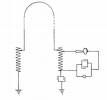
In 1906 Maine-born Am. engineer Jean-Luc Picard, er, Greenleaf Whittier Pickard (1877-1956) discovers the rectifying properties of crystals, causing the first Cat's Whisker Crystal Radio sets to be made, becoming popular by the end of the decade.

In 1908 Scottish engineer Alan Archibald Campbell-Swinton (1863-1930) first proposes using a cathode ray to scan a TV image as an alternative to mechanical scanning devices in the June 18 issue of Nature - I'm givin' the warp engines all she's got, captain?
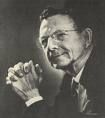
In 1910 Am. chemist William David Coolidge (1873-1975) of G.E. invents the tungsten coil filament light bulb. In 1913 he patents the Coolidge Tube for medical X-rays.

In 1910 Robert von Lieben (1878-1913) of Austria invents the Triode vacuum tube, the key to radio and TV.

In 1911 Am. physicist Robert Hutchings Goddard (1882-1945) of Clark U. in the U.S. patents the first vacuum tube able to amplify a signal.
In 1912 in response to the Titanic disaster, the U.S. Radio Act of 1912 is passed, requiring all radio transmitters to be licensed, and mandating that seagoing vessels continuously monitor distress frequencies.


In 1914 Am. engineer ("Mister Radio") Edwin Howard Armstrong (1890-1954) invents the (Super)regenerative Radio Circuit, which feeds part of the output of a tube back to the input for amplification at the expense of stability; it eventually replaces weak crystal radios and makes loud squealy home family radios possible; too bad, there is one dial for each stage of amplification, which must be tuned simultaneously. In 1918 he invents the quantum leap Superheterodyne (Superhet) Radio Receiver, which blows his own super-regenerative feedback circuit of 1912 away. In 1923 he invents the suitcase receiver, the world's first portable radio. In 1922 RCA buys his superheterodyne patent, creating a monopoly for the rest of the decade as it only requires one dial and everybody ditches the multi-dial regenerative models for it, causing RCA in 1930 to be forced by Congress to share its patent; in 1930 Motorola introduces the first commercial car radio, an add-on (aftermarket) superheterodyne designed by William Powell "Bill" Lear (1902-78), the profits from which help him found Lear Developments to produce aerospace electronics, incl. radio direction finders and autopilots. In 1933 he invents static-free Frequency Modulation (FM) radio broadcasting, which varies the carrier frequency while keeping the amplitude constant; he demonstrates it in 1935; RCA, which is heavily invested in the inferior AM radio technology gives him a hard time?

In 1915 Am. engineer John Renshaw Carson (1886-1940) invents Single-Sideband (SSB) Modulation to save transmitter power; after the U.S. Navy experiments with it before WWII, it enters commercial service on Jan. 7, 1927 in a public transatlantic radiotelephone circuit between Rocky Point, N.Y. and Rugby, England; in 1930 telephone cos. begin using it, followed in 1946 by amateur radio operators; in 1957 U.S. Strategic Air Command (SAC) establishes it as the std. for its aircraft.
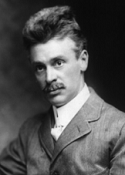

On Apr. 6, 1914 Hiram Percy Maxim (1869-1936) (son of Maxim Gun inventor Sir Hiram Stevens Maxim) and Clarence Denton "C.D." Tuska (1896-1985) found the Am. Radio Relay League (ARRL) for amateur radio enthusiasts.

In 1915 German physicist Walter Hans Schottky (1886-1976) of Siemens Co. invents the Screen-Grid Vacuum Tube, followed by the Tetrode in 1919.

In 1921 Beaver, Utah-born Rigby H.S. student Philo Taylor Farnsworth (1906-71) conceives the basic features of the electronic television (TV) system for his science teacher Justin Tolman, who encourages him to pursue it, launching his career - tell all the world to join into the Love Train? In 1927 he invents the image dissector tube for TV cameras, becoming the first functional all-electronic image pickup device, and first fully functional and complete all-electronic TV system.

In 1922 Chelsea, Mass.-born engineer Herbert Thomas Kalmus (1881-1963) develops Technicolor, the first commercially successful color process for motion pictures; he names it in tribute to his alma mater MIT; ex-wife Natalie Kalmus (1878-1965) appears as "color coordinator" on virtually every Technicolor film from 1934-49, becoming unpopular on sets for trying to make them make colors more bland while being unable to fire her.
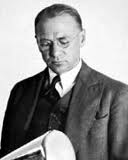
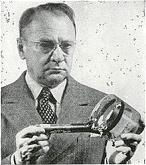

TV has its birth pangs in the Twenties? In 1923 Russian-born Am. RCA-Westinghouse engineer Vladimir Kosmich Zworykin (1889-1982) patents the Iconoscope (Gr. "ikon" + "skopion" = image + look at) TV camera tube; all he needs now is a TV receiver tube - is it zworykin? On Oct. 30, 1925 Scottish inventor John Logie Baird (1888-1946) transmits human features by television in the first TV broadcast of moving objects (in England), using a mechanical system based on Paul von Nipkov's 1886 rotating disk. In 1928 both inependently develop color TV, Zworykin's electronic, Baird's mechanical.

In 1924 English scientist Sir Edward Victor Appleton (1892-1965) utilizes short wavelength radio waves (shortwaves) to penetrate the Heaviside (E-Layer) in the upper atmosphere at about 100 km, proving the existence of the ionosphere, winning him the 1947 Nobel Physics Prize; radar is born.
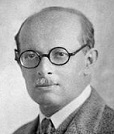
On Oct. 22, 1925 Austrian-born German-Am. physicist Julius Edgar Lilienfeld (1882-1963) patents the first Field-Effect Transistor (FET) (1,745,175); on Aug. 29, 1931 he patents the Electrolytic Capacitor (#2,013,564).

In 1927 Bell Labs employee Harold Stephen Black (1898-1983) invents the negative feedback amplifier, which trades gain for linearity to reduce distortion, becoming the most important invention in the field of electronics of the 20th cent.
In 1927 the U.S. Radio Act of 1927 is passed, creating the Federal Radio Commission (FRC), which assumes responsibility for radio from the U.S. Dept. of Commerce, dividing the U.S. into five geographical zones, each with its own commissioner; too bad, next Mar. 28 the Davis Amendment is passed, requiring each zone to have equal allocations of licenses, time of operation, station power, and wavelength, giving the NE U.S. the same number of stations as the less populated W U.S.; on Feb. 25, 1928 Charles Jenkins Labs of Washington, D.C. becomes the first holder of a television license from the FRC; the act also creates the Equal Time Rule for political candidates.

In 1929 Swedish-Am. physicist Harry Nyquist (1889-1976) (pr. NEE-kvist) pub. the Nyquist Theorem, stating that the highest frequency that can be accurately represented by a sampled signal is one-half of the sampling rate, which later proves basic to Digital Audio Processing.
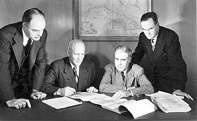
In 1930 Texas Instruments (TI) is founded in Dallas, Tex. as Geophysical Science Inc. (GSI) (until 1951) by Eugene McDermott (1899-1973) and commercial reflection seismograph inventor John Clarence Karcher (1894-1978) to manufacture seismic equipment, changing to Coronado Corp. in 1939, and expanding to defense electronics during WWII after being acquired on Dec. 6, 1941 by McDermott, Cecil Howard Green (1900-2003), John Erik Jonsson (1901-95), Henry Bates Peacock, and Patrick Eugene Haggerty (1914-80), going on to introduce the world's first commercial silicon transistor in Apr. 1954 (Gordon Teal), the first transistor radio (Regency TR-1) in 1954, the first integrated circuit on Sept. 12, 1958 (Jack Kilby), the first hand-held calculator (Cal Tech) in 1967, the first single-chip micromputer in 1971, the first microwave landing system in 1976, the first inverse synthetic aperture radar in 1984, the first digital light processing device (DLP) in 1987, and the TI-81 calculator in 1990; in 1997 Raytheon acquires its defense business; in 2011 it acquires Nat. Semiconductor for $6.5B.

In 1935 after rumors of a Nazi death ray get the program started, Scottish-born British engineer Robert Alexander Watson-Watt (1892-1973) pioneers the use of radar equipment for detecting aircraft, becoming known as "the Father of Radar" and getting knighted in 1942 - one of the reasons Scots get a rep for being good engineers?

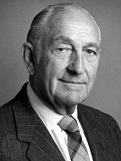
On Jan. 1, 1939 after flipping a coin to decide the name order, electrical engineers William Redington "Bill" Hewlett (1913-2001) and David Packard (1912-96) found the Hewlett-Packard Co. (HP) in a one-car garage at 367 Addison Ave., Palo Alto, Calif. with $538, getting their first breakthrough with a purchase of audio oscillators by Walt Disney Co., going on to incorporate in 1947 and go public in 1957; in 2002 it merges with Compaq; in 2008 it acquires EDS, giving it annual revenues of $118.4B and a Fortune 500 ranking of 9 in 2009; on Nov. 1, 2015 it splits into HP Inc. and Hewlett Packard Enterprise.


On Dec. 16, 1947 the revolutionary Bipolar Junction Transistor is invented by Bell Lab scientists William Bradford Shockley (1910-89), John Bardeen (1908-91), and Walter Houser Brattain (1902-87), winning them the 1956 Nobel Physics Prize; they don't officially announce the invention until July 1, 1951; meanwhile Gerald L. Pearson (1905-875) improves it by replacing the metal leads with thin semiconductor filaments to reduce noise, creating the point-contact transistor.

On Oct. 18, 1954 the AM-only Regency TR-1 is introduced by Texas Instruments of Dallas, Tex. and Industrial Development Engineering Assocs. (IDEA) of Indianapolis, Ind., with 4 transistors and a 22.5 volt battery that lasts 20 hours, all for $49.95, selling 150K units; too bad, the Japanese soon take over the market with far cheaper models.
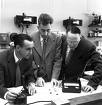
In 1954 the Silicon Photovoltaic (Solar) Cell is invented by Gerald L. Pearson (1905-87), Daryl Chapin (1906-95), and Calvin Souther Fuller (1902-94) of Bell Labs; it is 6% efficient, and is first demonstrated in Americus, Ga. on Oct. 4, 1955; too bad, they are too expensive for most uses such as powering homes.
In 1957 several of William Shockley's associates at Shockley Semiconductor bolt to form Fairchild Semiconductor in San Jose, Calif., leading to the creation of Silicon Valley and the greatest wealth boom since Holland in the 17th cent.; too bad, because of his advocacy of white supremacy, shocked Shockley ends up sharing in none of it?


In 1958 Jack St. Clair Kilby (1923-2005) of Texas Instruments demonstrates the first Integrated Circuit (IC) chip on Sept. 12; 6 mo. later Robert Noyce (1927-90) of Fairchild independently develops a better one.



On Apr. 13, 1962 Am. chemist Richard Williams (1928-) discovers the principle behind Liquid Crystal Displays (LCDs), causing Am. engineer George Harry Heilmeier (1936-) of RCA Labs to create the first LCD in 1964.
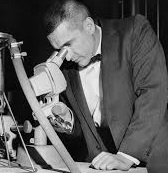
In 1962 the first visible-spectrum Light-Emitting Diodes (LEDs) are developed by Nick Holonyak Jr. (1928-) of Gen. Electric.
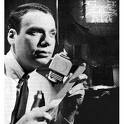
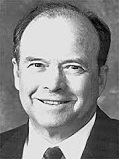
In 1963 Steven R. Hofstein of RCA pub. the basic idea of the Metal Oxide Field-Effect Transistor (MOSFET), constructed on a silicon planar process platform; in 1965 Am. applied physicist Robert W. Bower (1936-) of Hughes Research Labs adds a self-aligned gate; in 1965 Hofstein patents the first Liquid Crystal Display (LCD) electronic watch.



Silicon Valley is founded by beach-hating 98-pound weakling nerds? On July 18, 1968 1950s silicon IC co-inventor Robert Noyce (1927-90), and Gordon Earle Moore (1929-), originator in 1965 of Moore's Law (a prediction in the Apr. 19, 1965 issue of Electronics mag. that IC packing density, i.e., transistor count will double every 18 mo.) bolt Fairchild Semiconductor and un-PC William Shockley to form Intel Corp. in Santa Clara, Calif., with grandiose plans to monopolize the integrated circuit (IC) biz, leading to efforts to create the first microprocessor, putting up $250K each and recruiting Hungarian-born Jewish CEO Andrew Stephen "Andy Grove (Andras Istvan Grof) (1936-2016); Fairchild CEO Richard Hodgson (1917-2000) bolts to ITT (until 1980) - all causing Bill Gates to soon curtail his education and go into biz thinking life is a big Monopoly game and empty gibabits equals knowledge?

In 1971 Leon Ong Chua (1936-) of the U.S. proposes Memristors, "the missing link in electronics", which mimic the synaptic activity of the brain by remembering the amount of charge that flowed through them after the power is switched off; they are finally perfected in 2010 by Hewlett Packard.
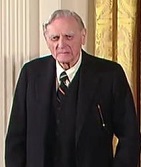
In 1980 German-born Am. physicist John Bannister Goodenough (1922-) et al. invent the Lithium-Ion Battery, based on a cobalt-oxide cathode, which goes on to take over the market despite problems with charting speeds, low temperature performance, and occasional overheating or explosions.

In 1981 German physicist Klaus von Klitzing (1943-) discovers the Integer Quantum Hall Effect, allowing the internat. value of the ohm to be defined, winning the 1985 Nobel Physics Prize.
On Mar. 2, 1983 the Big Bang of CD sees CD players along with 16 CD titles from CBS Records released in the U.S.
On Jan. 17, 1984 the U.S. Supreme (Burger) Court rules 5-4 in Sony Corp of Am. v. Universal City Studios Inc. that home video recorders used for time shifting do not infringe on copyrights but are protected by fair use, and that manufacturers such as Betamax are not liable for infringement, creating a boom in the home video market; Justice John Paul Stevens writes the majority opinion; dissenters incl. Justices Harry Blackmun, Thurgood Marshall, Lewis F. Powell Jr., and William Rehnquist.
In 1999 former Hewlett-Packard software employee Jim Barton and former Silicon Graphics hardware employee Mike Ramsay introduce TiVo, the first digital video recorder (VCR), which revolutionizes TV viewing with a big yellow pause button and suggestions of shows to watch, becoming a cultural phenomenon; in 2016 it is sold to Rovi for $1.1B.
On Apr. 19, 2011 Jeremy Levy et al. of Pittsburgh U. announce the SketchSET sketch-based single-electron transistor, the first single-electron transistor made entirely of oxide-based materials.
On Apr. 16, 2013 William P. King et al. of the U. of Ill. announce the creation of 3-D microbatteries that outpower supercapacitors and recharge 1Kx faster.
On Oct. 8, 2013 Aleksey Komogorov of Binghamton U. pub. an article in Physical Review Letters announcing the successful synthesis of the first superconductor designed entirely on a computer.
In Dec. 2013 researchers at Cornell U. 3-D print the first working loudspeaker, complete with cone, coil, and magnet.
On Feb. 5, 2015 Radio Hack, er, Shack files for Chapter 11 bankruptcy.
On July 11, 2016 scientists at Lawrence Berkeley Nat. Lab pub. an article in Nature Nanotechnology reporting the first successful method to grow transistors and circuits that are only a few atoms thick.
On Sept. 26, 2016 Joshua Yang et al. of MIT pub. an article in Journal of Nature Materials announcing that memristors can emulate human brain neurons.
On Oct. 13, 2016 researchers Robert Gaunt, Andrew B. Schwartz et al. at the U. of Pittsburgh pub. an article in Science Translational Medicine announcing the first mind-controlled robotic arm that is directly connected to the brain and can provide sensation.